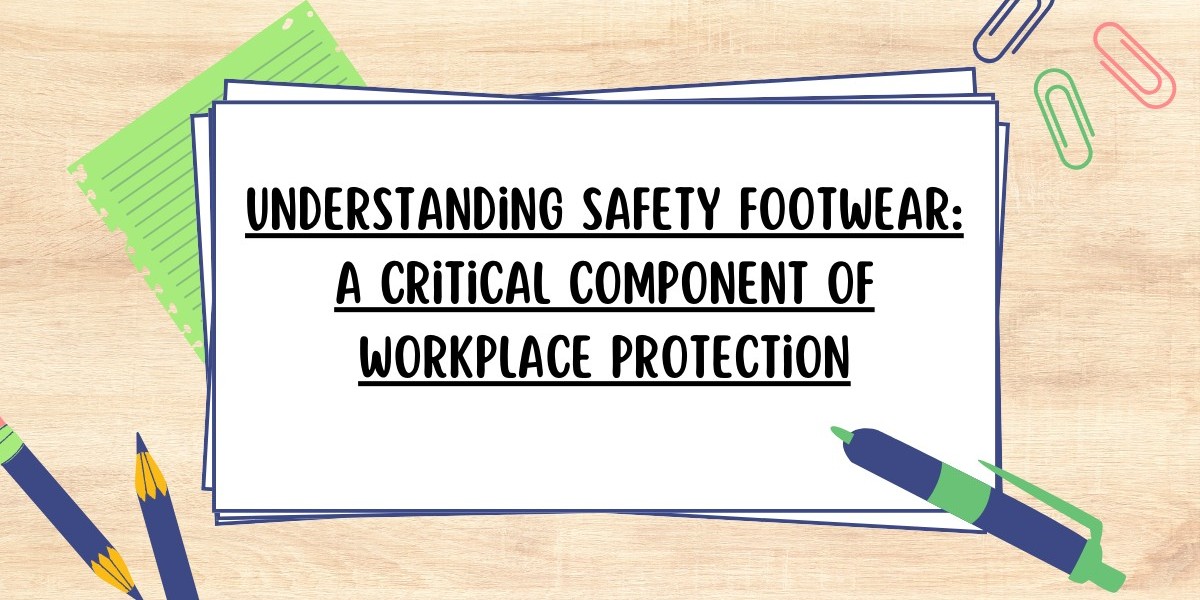Understanding Safety Footwear: A Critical Component of Workplace Protection
In today’s evolving industrial and occupational environments, the importance of protective gear cannot be overstated. While helmets, gloves, and high-visibility clothing often come to mind, safety footwear plays a crucial and sometimes underestimated role in ensuring employee wellbeing. Whether in construction zones, manufacturing facilities, warehouses, or even kitchens, the right pair of safety shoes is an essential part of personal protective equipment (PPE).
What is Safety Footwear?
Safety footwear refers to specially designed shoes or boots intended to protect the wearer from foot injuries that can result from workplace hazards. These hazards may include falling objects, sharp materials, electrical risks, chemical spills, slippery surfaces, or extreme weather conditions. Unlike ordinary footwear, safety shoes and boots are constructed with reinforced materials and specific design features that prioritize function, durability, and protection.
The materials used in safety footwear are often more robust than those in casual or fashion footwear. Steel, composite, or aluminum toe caps shield against impact and compression. Outsoles are made slip-resistant to reduce the chance of falls. Insoles are designed for prolonged comfort and to absorb shock. Each element of the shoe is meticulously considered to ensure that workers remain protected without compromising mobility or productivity.
Why Safety Footwear Matters in the Workplace
Accidents at the workplace are not only costly in terms of healthcare expenses and insurance claims, but they also disrupt productivity, affect morale, and could result in legal consequences. One of the most common types of injuries in industrial settings is foot injuries. These can be caused by anything from stepping on sharp objects, heavy items falling on feet, slipping on wet surfaces, or prolonged exposure to hazardous chemicals.
Employers are legally and ethically obligated to provide a safe working environment. In many industries, national or regional labor safety regulations require the use of safety footwear. Ensuring that employees wear the right type of safety shoes significantly reduces the chances of injury and signals a commitment to worker safety.
In addition to physical protection, safety footwear can help in promoting better posture and reducing fatigue. High-quality safety shoes offer support to arches, heels, and ankles, which is essential for workers who stand or walk for long hours. Over time, this can prevent chronic issues like back pain, joint problems, and muscular fatigue.
Common Types of Safety Footwear
While all safety shoes serve a protective function, they are not one-size-fits-all. Different workplaces and roles demand different features. For example, a construction worker may require reinforced steel toe caps and puncture-resistant soles, while a lab technician might prioritize chemical-resistant materials.
Steel-toe boots are perhaps the most widely recognized form of safety footwear. These are ideal for environments where there is a high risk of heavy objects falling. Composite-toe footwear, made from materials such as carbon fiber or Kevlar, offers a lighter alternative without compromising protection. They are also suitable for workers in security-sensitive environments where metal detectors are in place.
Metatarsal guards extend protection over the upper part of the foot, especially important in industries involving heavy machinery. Slip-resistant shoes are popular in the food service, hospitality, and healthcare industries, where wet or greasy floors are common. Electrical hazard (EH) rated footwear is vital for electricians or those who work in environments with live circuits, offering insulation from electric shocks.
Each of these variations comes with unique features tailored to specific job roles and hazards. Choosing the right type ensures that employees are adequately protected for their specific tasks.
Materials and Innovations in Safety Footwear
Modern safety footwear benefits from continuous innovation in both design and materials. While traditional steel-toe boots still dominate the market, many companies are investing in lighter, more ergonomic materials. Composite materials provide similar levels of impact protection without the weight of steel. New polymers and rubber compounds are being developed to increase slip resistance and flexibility.
Breathable linings and moisture-wicking technologies are incorporated into the design to enhance comfort and hygiene. Antimicrobial treatments prevent odor and bacterial build-up, which is particularly useful for workers wearing shoes for extended hours. Waterproofing technologies and insulation options allow safety footwear to adapt to various climates and working conditions.
Advanced fastening systems like BOA dials or quick-lacing mechanisms have also made donning and removing shoes faster and easier, which is beneficial in fast-paced work environments.
Maintenance and Lifespan of Safety Footwear
The lifespan of safety footwear depends on the work environment, usage frequency, and care practices. On average, a pair of safety shoes lasts between 6 to 12 months under regular usage. However, harsh working conditions can reduce this time significantly.
Regular inspection is crucial. Cracks in the sole, worn-out treads, exposed toe caps, or reduced shock absorption are all signs that the footwear needs replacing. Keeping the footwear clean and dry, storing it properly, and using footbeds or insoles can also extend its usability.
Employers should have policies in place for routine checks and timely replacement. Investing in the proper care and replacement of safety footwear can prevent far more costly consequences in the long run.
How to Choose the Right Safety Footwear
Choosing safety footwear involves more than picking the right size. Factors such as the nature of the work, the hazards involved, comfort, and certification standards must be considered. Most countries have their own safety standards such as EN ISO 20345 (Europe), ASTM F2413 (USA), or CSA Z195 (Canada). Ensuring the footwear meets these standards is essential for compliance and effectiveness.
The fit should be snug but not tight, with enough room to move the toes. Trying footwear with work socks, walking around, and testing the grip can help evaluate comfort and performance. Consulting with PPE specialists or conducting a workplace hazard assessment can also help in selecting the right footwear for a specific job role.
Frequently Asked Questions (FAQs)
What makes safety footwear different from regular shoes?
Safety footwear is engineered specifically to protect against workplace hazards such as falling objects, electrical shocks, punctures, and slips. Unlike regular shoes, they feature reinforced materials like steel or composite toe caps, anti-slip soles, and durable construction that complies with industrial safety standards.
Do all jobs require safety footwear?
Not all jobs require safety footwear, but any job with potential hazards like heavy machinery, sharp objects, or slippery floors will typically require protective footwear. Employers are usually mandated by law to provide it in such environments.
Are steel-toe boots better than composite-toe boots?
Steel-toe boots provide excellent protection against impact and compression and are generally more affordable. Composite-toe boots, while slightly more expensive, are lighter, non-metallic (ideal for metal-free zones), and don’t conduct heat or cold, making them better for specific environments.
How often should safety shoes be replaced?
Safety shoes should generally be replaced every 6 to 12 months, but this depends on usage and working conditions. Any visible damage, discomfort, or loss of protective capability is a signal that replacement is necessary.
Can safety footwear be stylish and comfortable?
Absolutely. Many manufacturers now focus on blending safety with aesthetics and comfort. Modern designs look more like athletic shoes or casual boots, and include ergonomic features like arch support, breathable linings, and cushioned soles.
Is it mandatory for employers to provide safety footwear?
In many regions, labor laws require employers to provide safety footwear if the job involves foot-related hazards. Failure to comply can result in fines, legal action, or increased insurance liability.
Final Thoughts
Safety footwear is more than just a compliance requirement—it's a critical layer of protection that allows workers to perform their duties with confidence and reduced risk. As industries continue to evolve and work environments become more demanding, the need for high-quality, reliable, and comfortable safety footwear will only grow. Employers and employees alike must treat it not as an accessory, but as a necessity, forming the foundation of workplace safety and wellbeing.









